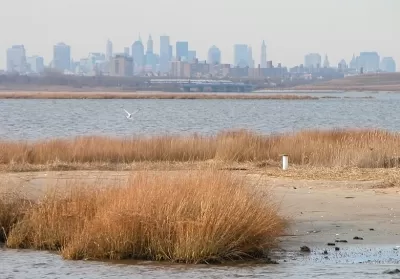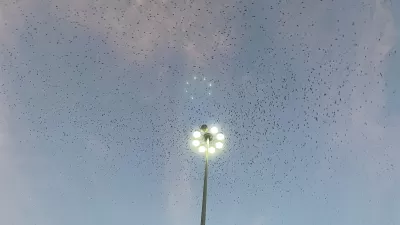Created so people could "experience nature in the midst of crowds," New York's Jamaica Bay National Wildlife Refuge embodies the characteristics of all modern national parks: abundant, welcoming, and threatened.

Hidden in plain view, the Jamaica Bay National Wildlife Refuge in Queens plays host to abundant waterfowl in a tidal marsh. Brandon Keim writes, "My cab drivers, most of them born and raised in Queens, often don't know where the refuge is. More New Yorkers have seen Jamaica Bay through an airplane window than from their feet. That's part of its beauty. There, still within a city of 8.4 million tightly packed people, is a place where you can not see anyone for long stretches of time. Or at least not anyone human."
This century's challenges will inevitably affect the refuge. "As Earth's carbon-choked climate continues to warm and its seas rise, the bay's beloved and ecologically vital features will be inundated, submerging marsh islands where bird colonies breed and tidal wetlands that shelter baby fish until they're ready for the open ocean."
On top of climate change, development near the park can erode the tidal buffer zone. Keim writes, "Too many people have already forgotten Hurricane Sandy's harsh lessons about the importance of wetlands and dunes for absorbing storms."
There's also the eternal paradox: how do you visit and enjoy a nature preserve when the best thing would be to leave it alone? "In a less-populated time, it might have seemed like the national parks didn't need our help, that they could thrive with benign neglect and the stewardship of a few people in uniform. If that was ever true before, it's certainly not true now."
FULL STORY: Our era’s iconic national park is hidden in New York City

Maui's Vacation Rental Debate Turns Ugly
Verbal attacks, misinformation campaigns and fistfights plague a high-stakes debate to convert thousands of vacation rentals into long-term housing.

Planetizen Federal Action Tracker
A weekly monitor of how Trump’s orders and actions are impacting planners and planning in America.

In Urban Planning, AI Prompting Could be the New Design Thinking
Creativity has long been key to great urban design. What if we see AI as our new creative partner?

King County Supportive Housing Program Offers Hope for Unhoused Residents
The county is taking a ‘Housing First’ approach that prioritizes getting people into housing, then offering wraparound supportive services.

Researchers Use AI to Get Clearer Picture of US Housing
Analysts are using artificial intelligence to supercharge their research by allowing them to comb through data faster. Though these AI tools can be error prone, they save time and housing researchers are optimistic about the future.

Making Shared Micromobility More Inclusive
Cities and shared mobility system operators can do more to include people with disabilities in planning and operations, per a new report.
Urban Design for Planners 1: Software Tools
This six-course series explores essential urban design concepts using open source software and equips planners with the tools they need to participate fully in the urban design process.
Planning for Universal Design
Learn the tools for implementing Universal Design in planning regulations.
planning NEXT
Appalachian Highlands Housing Partners
Mpact (founded as Rail~Volution)
City of Camden Redevelopment Agency
City of Astoria
City of Portland
City of Laramie





























